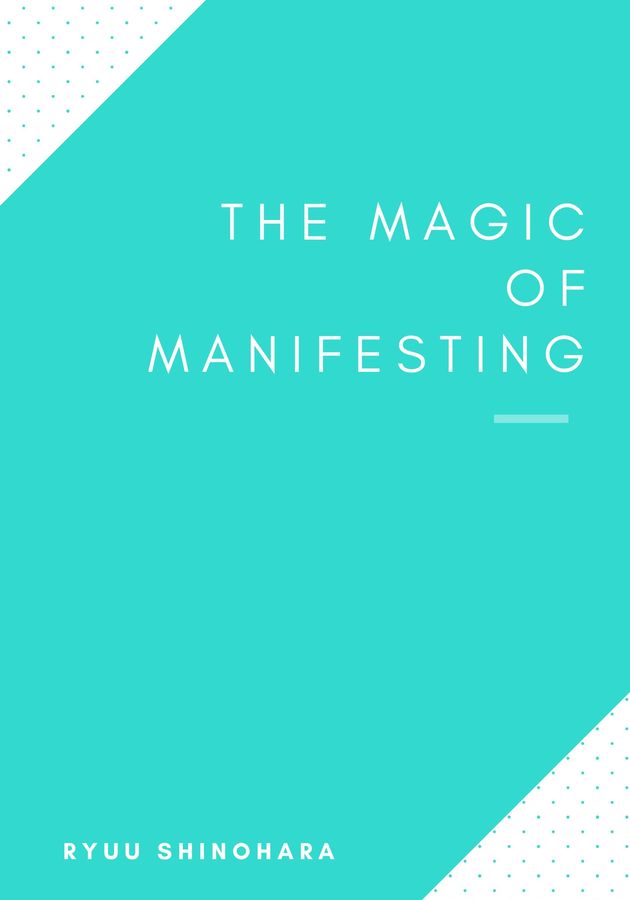Written with the conviction that the greatest mystery of all – our own existence – is a mystery no longer, Richard Dawkins’ “The Blind Watchmaker” demonstrates how elegant and definite solution Darwin’s natural selection is to the age-old problem of complex design.
So, get ready to find out why we weren’t designed by a faultless creator that people tend to call god, but by a blind one, which scientists since Darwin refer to as “evolution.”
The watchmaker analogy and the argument from design
In 1802, an English clergyman by the name of William Paley published a famous treatise with a rather baroque title: “Natural Theology – or Evidences of the Existence and Attributes of the Deity Collected from the Appearances of Nature.” To this day, the book is still one of the best-known expositions of the “Argument from Design,” arguably the most influential of all arguments for the existence of a God; in fact, the very phrase “argument from design” originates from it.
Paley begins “Natural Theology” with a famous and oft-quoted passage. “In crossing a heath,” he writes, “suppose I pitched my foot against a stone, and were asked how the stone came to be there; I might possibly answer, that, for anything I knew to the contrary, it had lain there forever: nor would it perhaps be very easy to show the absurdity of this answer. But suppose I had found a watch upon the ground, and it should be inquired how the watch happened to be in that place; I should hardly think of the answer which I had before given, that for anything I knew, the watch might have always been there. Yet why should not this answer serve for the watch as well as for the stone?”
And, indeed, why should it not? According to Paley, it is for one reason and one reason only: namely, upon closer inspection, in the case of the watch, we can discover something we can’t in the case of the stone. The clock's several parts are framed and put together for a predefined purpose, assuming “that the watch must have had a maker: that there must have existed, at some time, and at some place or other, an artificer or artificers, who formed it for the purpose which we find it actually to answer; who comprehended its construction, and designed its use.”
But, then again – goes on Paley – if we can deduce this for a simple, man-made object such as a watch, why shouldn’t we suppose the same for a natural object such as a stone – or a flower, a deer, a man? After all, even if we can’t surmise their purpose here and there, natural objects are obviously around us for a reason, moreover, are infinitely more complex than objects designed and manufactured by man, “in a degree which exceeds all computation.” It is only logical – if not inevitable – to conclude that they too must have had a Designer, a sort of Celestial Watchmaker.
The accumulation of small changes
At least in part, Paley wrote “Natural Theology” to refute the ostensibly designer-less concept of “transmutation of species,” popularized a few years before Paley’s treatise by a certain Erasmus Darwin. About half a century later, Erasmus’ son, Charles, radically reframed his father’s ideas, and presented the world with a majestic response to Paley’s seemingly irrefutable argument from design: the theory of natural selection.
Darwin took Paley’s analogies pretty seriously and admitted that, on the face of it, living things, indeed, seemed just too beautifully and too purposefully “designed” to have shaped up by sheer chance. How, then, did they come into existence? His answer was as profoundly all-encompassing as it was superficially simple: by “gradual, step-by-step transformations from simple beginnings, from primordial entities sufficiently simple to have come into existence by chance.”
Organism “A” is nothing more but a simple primordial cell, which, due to a slight mutation, becomes organism “A1” – so similar to “A” for the two to be almost indistinguishable. However, a random mutation in organism “A1” produces organism “A2,” which then becomes organism “A3” using the same mechanism; this goes on for some time, and, after millions of years, organism “B” emerges, which is so different and so much more complex than the original “A” that it is difficult to notice any similarity between the two. You look like your parents, and they look like their parents, who, in turn, are quite similar to their mother and father; however, there are a few similarities between you and your great-grandparents, aren’t they? Accumulating small changes over enormous periods inevitably produces big changes. Darwin believed that it produced all the known species.
Natural selection: the blind watchmaker
If this sounds unlikely to you, think, by way of comparison, of the change that man has fashioned, in a much shorter time, by way of genetic selection of dogs. In basically no more than a single millennium, we have gone from wolf to Pekinese, Bulldog, Chihuahua, and Saint Bernard! Though these breeds are so dissimilar to each other, we know as an indisputable fact that all of them have stemmed from a single wolf-like ancestor. And yet, the time we needed to “design” them is incomparably shorter than the time one should grant natural selection to design all other species!
Ah, but you say at this point – “there’s still someone controlling the process in the case of dogs!” Well, there is also something that directs natural selection as well: nonrandom survival. Organisms with favorable traits are, by definition, more likely to survive and reproduce; consequently, these favorable traits are more likely to be passed on to the next generation. Over time, these result in such improvements in an organism that would better allow that organism to continue to exist.
In other words, as strange as it might sound, there is no need for a designer to explain the perfect design of living organisms: they simply had no choice but to be designed so perfectly, because otherwise they wouldn’t have been sufficiently adapted to this environment to still exist. The only watchmaker in nature, Darwin demonstrated, are “the blind forces of physics.”
Unlike a true watchmaker, they didn’t have foresight, vision, or future purpose in their mind’s eye when they fashioned the living organisms of the world. Instead, mindlessly and incessantly, they just forced these organisms to adapt if they wanted to survive. The ones not perfectly enough designed to adjust – be that the dinosaurs or dodos – died out; the ones that endured, today and with hindsight, look just about perfect to us.
The evolution of the eye
“If it could be demonstrated that any complex organ existed which could not possibly have been formed by numerous, successive, slight modifications, my theory would absolutely break down,” Darwin wrote in “The Origin of Species.” A century and a half after the publication of this monumental book, still not a single case of a differently-formed, complex organ was discovered. Yes, that goes even for the complex, mammalian eye – a favorite counterexample for creationists and religious apologists.
“How could an organ so complex evolve?” asks, for example, the Bishop of Birmingham, Hugh Montefiore, in a book titled “The Probability of God.” The implication, of course, is that there is no answer. Francis Hitching, in “The Neck of the Giraffe or Where Darwin Went Wrong,” goes even further, saying that the eye either functions as a whole, or not at all. “So how did it come to evolve by slow, steady, infinitesimally small Darwinian improvements?” he asks. “What survival value can there be in an eye that doesn’t see?”
Darwin himself was fascinated by the eye and its complexity. He even admitted in a letter to Asa Gray that its evolution gave him “a cold shudder.” But, he instantly added, “when I think of the fine known gradations, my reason tells me I ought to conquer the cold shudder.” And, indeed, that should have been the right course of action, because, even though eyes don’t fossilize, based on different types of eyes one can observe in today’s creatures, we can safely deduce the different stages of the evolution of this splendid organ.
It probably all began with a simple protein mutation that granted some primordial underwater bacterium the ability to distinguish between light and dark. This is not only possible, but it is how some still-living simple organisms “see” even today. So, contrary to what Hitching says, this rudimentary “eye” was functional enough to be better than none at all and made all the difference between life and death. Not only because this light-sensitive bacterium could better harvest sunlight and be more efficient in making food for itself, but also because it could more successfully hide in the dark parts of the ocean from the DNA-damaging UV light when necessary. That’s why this newly evolved bacteria reproduced more and endured longer.
In one of their following generations, the light-sensitive proteins became a bit more specialized for photosynthesis and ended up concentrated in a single pigment spot. Then, as can be observed in flatworms even today, a bowl-shaped dimple evolved in this spot. The dimple was better than the pigment spot because it could tell an organism the direction from which the light came. Some time passed, and the dimples deepened, evolving into a socket with a small opening, a sort of a camera obscura – the earliest palpable precursor of the complex, mammalian eye.
The argument from poor design
Now, we can go on, but we guess there’s no need to do that because we believe we already made our point: given enough time, simple changes can amount to produce dramatic results. As improbable as it might seem today, the complex human eye evolved from a simple, light-sensitive protein inside an underwater bacterium – and many of the stages of this evolution can be observed in organisms that have survived to this day.
However, there’s an interesting twist to the story of the evolution of the human eye – one that is rarely pointed out. You see, when our ancient amphibious ancestors left the water for the land, they did this with eyes perfectly evolved for water environments. And since light bends when crossing from one medium to another, all those structural modifications that the eye had evolved to correct and eliminate the light-bending distortions underwater were now suddenly a burden. Over the course of time, the eyes of the first amphibians started to become better adjusted for land life, but they never recovered the perfect vision of their forefathers: unlike us, for example, octopuses can discern even fine details in the dark and do not have a blind spot.
So, contrary to what creationists say, as complex as it is, the human eye is not perfect. It is imperfect enough to suggest that no perfect “watchmaker” could have designed it. For example, the retina of our eyes is inside out: the nerves of its three million light-sensing cells are in front of the retina, instead of being behind it as it is in most invertebrates. And because they have to connect to the optic nerve (located behind the eye) to transfer the message to the brain, the retina nerves are forced to make a U-turn and dive back through a hole in the retina. This hole is the so-called “blind spot”: even when light reaches it through the iris and the lens, we still can’t see anything because the light’s access to the photoreceptor cells is blocked by a bundle of nerves needlessly swinging in front of them.
We don’t know for sure why human eyes evolved this way – or why the similar eyes of octopuses and squids evolved more perfectly (their light-sensing cells are oriented toward the light and, thus, they have no blind spot) – but we can guess that it’s due to some intermediate underwater organism, for whose survival front-to-back retina was temporarily disadvantageous. From then on, natural selection did the best it could with the available tools: it couldn’t just go back to the drawing board and start things all over, granting us a new set of eyes. Because of this, every organism inevitably keeps some trace of the intermediate stages through which it has passed – imperfections included.
Final Notes
In 2010, Tim Radford of The Guardian described “The Blind Watchmaker” as “one of the best books ever to address, patiently and persuasively, the question that has baffled bishops and disconcerted dissenters alike: how did nature achieve its astonishing complexity and variety?”
And indeed, “The Blind Watchmaker” is so eye-opening that it is difficult to think of a better and more comprehensive argument for the theory of evolution even three decades after this book was first published.
Truly magisterial.
12min Tip
If you can’t grasp something intuitively, don’t dismiss it as improbable. The human eye might seem too complex to be the product of the accumulation of small changes across time – but, as scientists have demonstrated, it actually is.





























